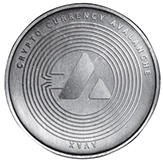Avalanche is a blockchain platform that aims to address the blockchain trilemma of scalability, security and decentralization thanks to its unique Proof of Stake (PoS) mechanism.
Like Ethereum, Avalanche supports smart contracts to run decentralized applications (dApps) on its network. Since Avalanche’s smart contracts are written in the Solidity language also used by Ethereum, it aims to create greater blockchain interoperable by integrating several decentralized finance (DeFi) ecosystems.
Avalanche is one of the fastest smart contracts platform in the blockchain industry, as measured by time-to-finality, and has the most validators securing its activity of any proof-of-stake protocol. Avalanche is argued to be fast, low cost, and green.
Consensus
For the blockchain network to validate transactions and remain secure, it must employ a protocol that allows its nodes to reach agreement — or consensus. With regards to cryptocurrencies, the conversation has centred around Proof of Work (PoW) vs Proof of Stake (PoS) as the leading methods for reaching this agreement.
Avalanche uses a novel consensus mechanism that builds on the PoS foundation. When a transaction is initiated by a user, it’s received by a validator node that samples a small, random set of other validators, checking for agreement. The validators perform this sampling procedure repeatedly, “gossiping” with each other to ultimately reach consensus. In this way, one validator’s message is sent to other validators, which sample more validators, which sample even more validators – again and again, until the whole system reaches agreement on an outcome. Just as a single snowflake can become a snowball, a single transaction can eventually turn into an avalanche.
Validator rewards scale according to the amount of time a node has staked its tokens, called Proof of Uptime, and if the node has historically acted according to the software’s rules, called Proof of Correctness.
Built-in Blockchains
Avalanche is built using three different blockchains in order to address the limitations of the blockchain trilemma. Digital assets can be moved across each of these chains to accomplish different functions within the ecosystem.
“Affectionately called the “red coin” by its holders, AVAX is the native token of Avalanche, with a maximum supply capped at 720 million tokens.
Avalanche’s core innovation is that it is composed of three blockchains rather than the usual one. The reason behind this design choice is quite brilliant as each blockchain specializes in a task within the broader Avalanche ecosystem instead of having one chain do them all. Distributing tasks amongst different chains helps keep the Avalanche platform agile, allowing it to achieve of blockchain traits — decentralization, security, and scalability.
Exchange Chain (X-Chain)
The Exchange Chain (X-Chain) is the blockchain responsible for creating and transacting Avalanche assets. Transactions on the X-Chain generate fees paid in AVAX. That’s similar to how gas fees on Ethereum are paid in ETH. So, even if you’re transacting JOE tokens, fees are always settled in AVAX.
Contract Chain (C-Chain)
Smart contracts are Avalanche’s key feature. This feature enables developers to build decentralized applications on Avalanche while leveraging the platform’s security and scalability benefits. The C-Chain runs smart contracts for the Avalanche platform and is EVM (Ethereum Virtual Machine) compatible. Being EVM compatible means anyone can deploy Ethereum smart contracts on Avalanche. Thus, existing Ethereum apps, such as DeFi titans Aave, can easily deploy a version of their product on Avalanche. Deploying Ethereum smart contracts on Avalanche gives developers access to the latter’s features using the same Ethereum developer tools as always.
Platform Chain (P-Chain)
Avalanche’s P-Chain allows anyone to create an L1 or L2 blockchain. You can even go as far as creating a group of them. In Avalanche terms, these blockchains are called subnets, with the P-Chain being the default subnet common to all. The P-Chain manages the landscape of Avalanche subnets by keeping track of validators, but subnets are also responsible for validating the P-Chain.
 AVAX Token
AVAX Token
Affectionately called the “red coin” by its holders, AVAX is the native token of Avalanche, with a maximum supply capped at 720 million tokens. AVAX has at least three use cases on the network.
Firstly, Avalanche users need AVAX to pay for transaction fees on the network. That’s similar to how ETH is used to pay for gas fees on Ethereum. In fact, Avalanche’s fee algorithms are based on Ethereum’s dynamic gas fee model, which is known as EIP-1559. While Ethereum’s gas fee is partly burned and partly paid to miners Avalanche’s fee is entirely burned. According to tracker site Burned Avax, more than 1 million AVAX have been burned as of this writing, or close to $1 billion.
Secondly, AVAX is used in staking, which is a term for pledging crypto, in this case AVAX, to participate in the validation process and help secure the blockchain. Proof-of-work networks like Bitcoin rely on validators running powerful computers known as mining rigs to secure the network. For proof-of-stake networks like Avalanche, the economic resource required to be given the right to validate isn’t running powerful computers but locking up crypto assets. Users who stake at least 2,000 AVAX can run their validator nodes and receive AVAX rewards. Those with less AVAX can join staking pools and combine their assets together with others in the network to become a single validator. All subnets, including the Primary Network, require validators who own and stake AVAX tokens as collateral. That isn’t to say you have to be a validator to get rewarded for staking AVAX. If you want AVAX staking rewards, you can delegate your stake to a validator to earn a percentage of the staking rewards.
The third use of AVAX is more technical and less of an interest to regular users. It’s used as a basic unit of account between the multiple subnets deployed on Avalanche. A subnet is a set of validators working to achieve consensus.
The Avalanche token, or AVAX, is a utility token that serves as the ecosystem’s common medium of exchange. Besides its use as currency in the Avalanche world, AVAX staking secures the network and rewards stakers with more AVAX. Compounding the value derived from staking is the AVAX deflationary token mechanism. AVAX tokens used to pay transaction fees are burned from the supply, permanently lowering the amount of AVAX in circulation.
Conclusion
Avalanche supports smart contracts to run decentralized applications (dApps) on its network. Avalanche is designed to address the issues of scalability, security and decentralization. It does this through its unique three different blockchains. Further, Avalanche as a software and programme is a generic and neutral offering that can be used to design a digital infrastructure or smart contract.
The AVAX token powers these processes and is used as a utility token to pay for transaction fees on the network. The token must be spent to use the features of Avalanche. Similarly, the staking in PoS is part of validation for which the token is used.
Based on and subject to the foregoing information, and for the purposes of this conclusion, nothing has come to our attention that causes us to believe that AVAX token is in breach of Sharia* principles and rulings as adopted by the scholars conducting this research.
However, these tokens and functionalities require periodical reviews. Sharia scholars and industry experts should be engaged to ensure that the services provided by such blockchains are beneficial and useful, and that there is substance behind all the jargon that is presented in the documentation.
*Attention is drawn to the term ‘Sharia’ and ‘Sharia compliant’ and its interpretation thereof as expressed in the following link https://shariyah.net/glossary/



